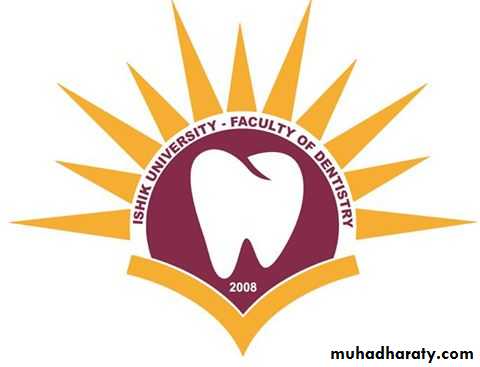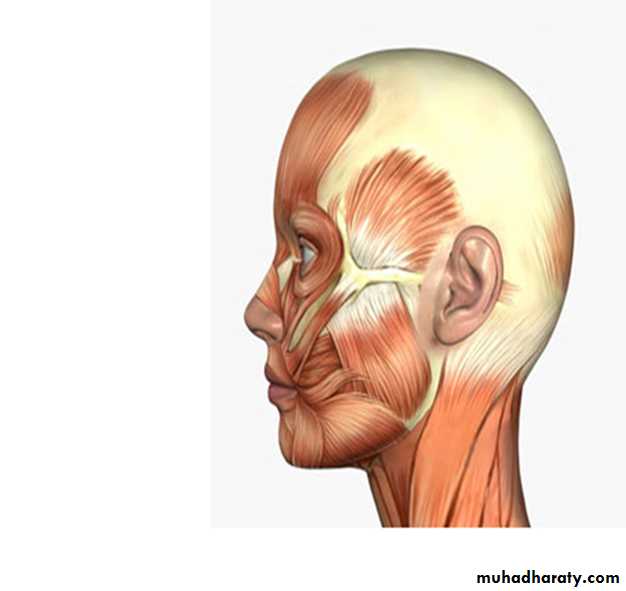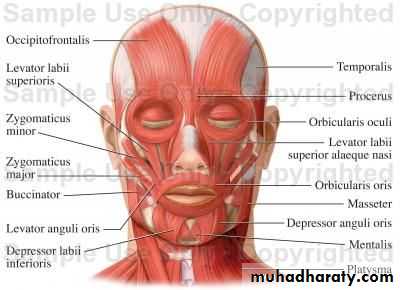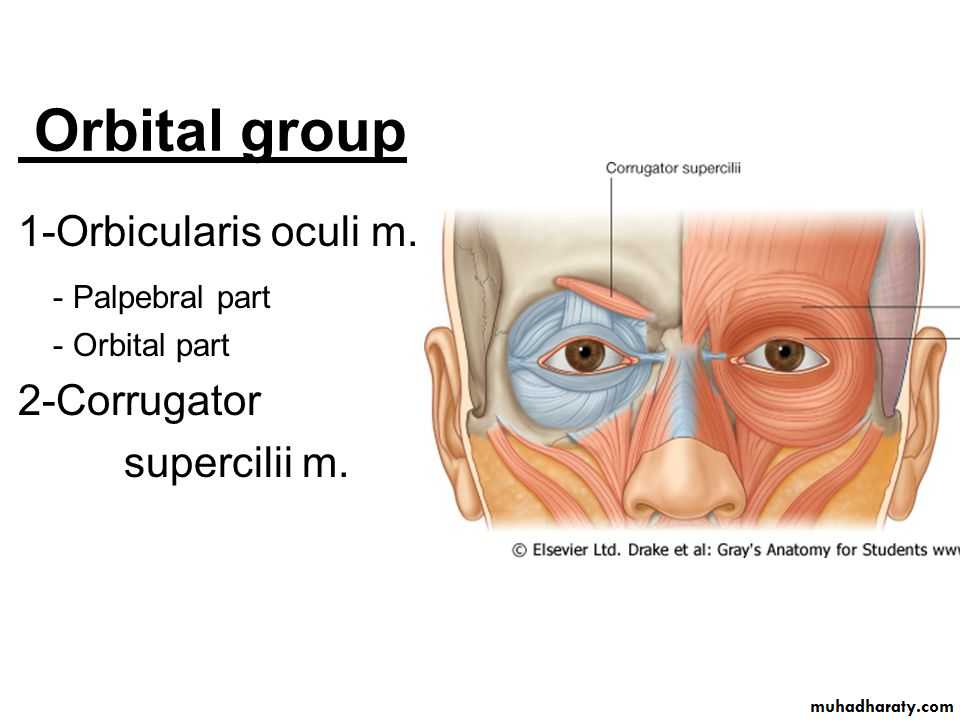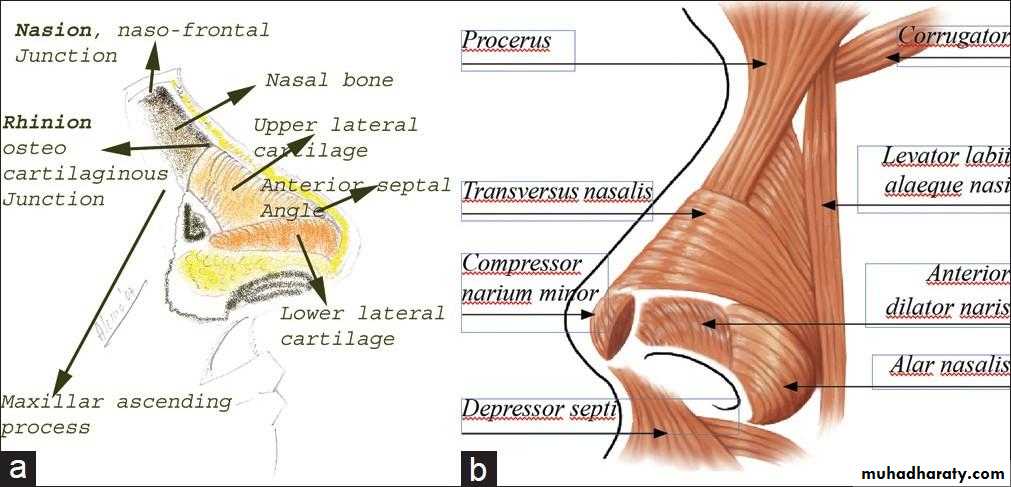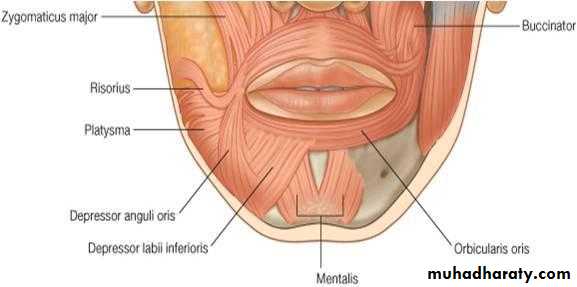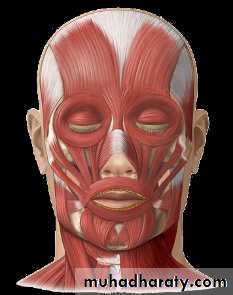Muscles of facial expression
Prepared by :Ari AsoSupervised by : Dr. Walaa Al-molaa
Muscles of facial expression
The muscles of facial expression are located in the subcutaneous tissue, originating from bone or fascia, and inserting onto the skin. By contracting, the muscles pull on the skin and exert their effects. They are the only group of muscles that insert into skin.These muscles have a common embryonic origin – the 2nd pharyngeal arch. They migrate from the arch, taking their nerve supply with them. As such, all the muscles of facial expression are innervated by the facial nerve.
The facial muscles can broadly be split into four groups;
Orbital
nasal
oral
Other muscles
Orbital Group
The orbital group of facial muscles contains two muscles associated with the eye socket. These muscles control the movements of the eyelids, important in protecting the cornea from damage. They are both innervated by the facial nerve.Nasal Group
The nasal group of facial muscles are associated with movements of the nose, and the skin around it. There are three muscles in this group, and they are all innervated by the facial nerve. They serve little importance in humans.Oral Group
These are the most important group of the facial expressors – the are responsible for movements of the mouth and lips. Such movements are required in singing and whistling, and add emphasis to vocal communication. The oral group of muscles consists of the orbicularis oris, buccinator, and various smaller muscles.Other Oral Muscles
There are other muscles that act of the lips and mouth. Anatomically, they can be divided into upper and lower groups:
The lower group contains the depressor anguli oris, depressor labii inferioris and the mentalis.
The upper group contains the risorius, zygomaticus major, zygomaticus minor, levator labii superioris, levator labii superioris, alaeque nasi and levator anguli oris.


